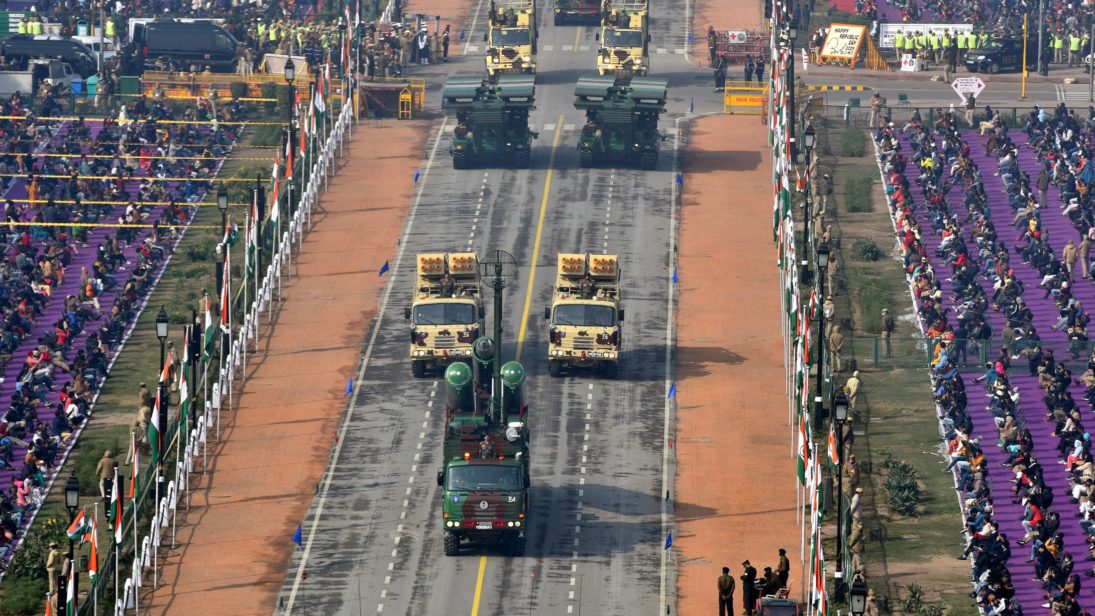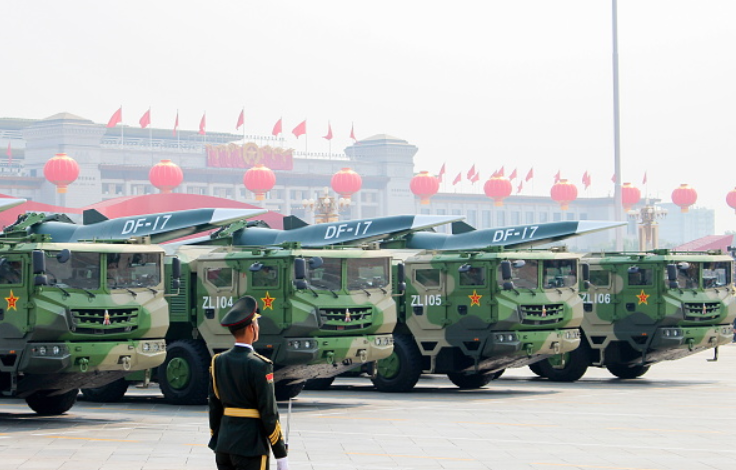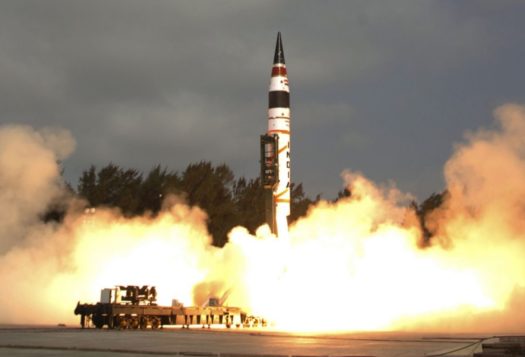
Over the past four decades, Asia has been a hotbed of geopolitical challenges including—although by no means limited to—localized wars for influence, the use of terrorism as a state policy, shifting nuclear force postures, extremist militant groups, and the rise of China as a hegemonic power challenging the world order.
These interconnected challenges form the crux of India’s core strategic concerns. In order of priority, the main security threats India faces come from a rising China, Pakistan’s illegal claims on Jammu and Kashmir (J&K), and the risks of destabilization from regional Islamist radicalism or extremism that is externally aided. For India, any regional confidence building measures (CBMs) will need to consider security threats from each of these core challenges.
Three Strategic Priorities: China, Pakistan, and Internal Unrest
The China Challenge
China is India’s foremost strategic challenge. The sources of distrust in the relationship range from flare-ups on the over two thousand miles of disputed borders to the deeper strategic challenges of rising hegemonism and expansionism that is paired with China’s growing military power. China and India are also locked in an ideological contest, as China aims to showcase its military and economic strength to the world while sidelining India as a competitor in Asia. This has been done through repeatedly denying India’s membership in international organizations including the Nuclear Suppliers Group (NSG) and the United Nations Security Council, and by offering economic and military aid to India’s neighbors to undermine India’s role in the region.
The inability to resolve the boundary dispute—which has long been frustrated by China’s unwillingness to exchange claim line maps and vagueness about China’s understanding of the boundary lines—is a broader symbol of the lack of trust in the relationship. The most recent standoff in Ladakh, ongoing infrastructure development on the border, and China’s aggressive military exercises in Tibet, send a clear message to India that China will continue to challenge the territorial status quo on the border. Distrust is further aggravated by China’s development of bases in the Indian Ocean Region (IOR)—including Gwadar, Myanmar, and the Hambantota naval facility in Sri Lanka—military and economic support to Pakistan and other countries in the region, and China’s military modernization that includes substantial development of conventional missiles that are regional in reach. Of major concern to India is the maritime force development of the People Liberation Army and the ambitious plan to field a blue water navy, which has dangerous portends for India in the IOR.
Given the secrecy that has shrouded China’s missile development, testing, and the latest silo bases and central bases with long-range delivery systems, India would be well advised not to accept China’s NFU policy.
Although the size of China’s nuclear arsenal is still dwarfed by the much larger arsenals of the United States and Russia, the country’s nuclear capability is expanding and it has grown into a force that is global in reach. While China has a No First Use (NFU) policy, the technical language of this policy appears conditional and ambiguous—first making a general commitment to NFU but then specifying an unconditional NFU only against non-nuclear weapons states or in nuclear-weapons-free-zones.1 Given the secrecy that has shrouded China’s missile development, testing, and the latest silo bases and central bases with long-range delivery systems, India would be well advised not to accept China’s NFU policy.
China’s non-adherence to multiple international legal frameworks, ongoing disputes throughout the region, and previous secrecy over military developments and modernizations make it crucial for India to take all aspects of China’s military development—including its nuclear forces—seriously. China may use nuclear weapons in many circumstances especially if faced with setbacks in military operations on the border or IOR or conventional attacks on mainland targets. As China focuses on projecting its image as a regional or even global power, of primary concern to India is that an internal insecurity in China could prompt external military action as a means of showing strength—be that on the Sino-Indian border, the Taiwan strait, or elsewhere. As the escalation pathways with China are still unknown, and it remains unclear what an authoritarian regime may do to protect its power, India must be able to establish a military and deterrence posture that responds to these uncertainties vis-à-vis China.

Pakistan
Pakistan is the second strategic challenge for India, and one that is increasingly intertwined with the China threat. Since India and Pakistan’s independence the threat from Pakistan has been based on J&K, which has become an intractable component of India-Pakistan relations and resulted in three unsuccessful attempts by Pakistan to seize the territory in 1947-48, during “Operation Gibraltar” in the 1965 war, and again in 1999. While India has indicated willingness to negotiate on other areas of the relationship with Pakistan—such as the Indus waters treaty and returning captured territories after the 1965 and 1971 wars—it cannot return to a pre-1947 state and the consequences for doing so would be catastrophic, and lead to massive human migration and perhaps full-scale war between the two countries. Pakistan has never given any other reason for aggression towards India except escalation over claims to Kashmir. The fear of escalation to the nuclear levels is based on Pakistan’s subconventional strategy moving into a conventional war which then spirals to the nuclear domain. Therefore, the first step in any Strategic Restraint Regime (SRR), as proposed by Pakistan, would be for Pakistan to let the issue of J&K be buried in history.
The China and Pakistan challenges have become increasingly intertwined. With sections of the over USD $70 billion China Pakistan Economic Corridor infrastructure projects in what India officially refers to as “Pakistan-occupied Jammu and Kashmir,” it is feasible that China could be drawn into a future military confrontation between India and Pakistan if a conflict was viewed as threatening these projects. China and Pakistan have cooperated closely on military development, including support of Pakistan’s nuclear and missile program—and India is well aware of a potential collusive threat.
India’s final strategic concern is radicalism and externally aided internal unrest—a concern that has only been heightened by the U.S. withdrawal from Afghanistan. India has strong memories of Pakistan using expertise it gained from aiding the mujahideen to support proxies in Kashmir following the Soviet withdrawal. While militancy has decreased since the 1990s, India is concerned it may face a renewed threat of instability if the Taliban or other militant groups were to expand their footprint on the subcontinent or if Pakistan were to turn its focus from Afghanistan to Kashmir.
Prospects for Trilateral and Bilateral CBMs
Given the threats from China, India has no choice but to modernize its military by enhancing operational and strategic-level capabilities, investing in the maritime domain in the Indian Ocean and perhaps the South China Sea, as well as strengthening its nuclear program to serve as deterrent to China. Forgoing these modernizations would lead to India being overwhelmed by China’s hegemonic intentions, however, any improved capability against China will be viewed by Pakistan as a Pakistan-designated threat in the conventional and nuclear field.
China has neither established nor seems inclined to enter into agreements with global or regional powers to develop CBMs or guarantees on nuclear forces or conventional operations. While China has signed onto international treaties such as the Non-Proliferation Treaty (NPT) and the Missile Technology control regime, it has a checkered record on adherence to these agreements. China has refused to discuss the nuclear issue with India—a fallout of India becoming a nuclear weapons state after the NPT came into force—and opposes India’s entry into the NSG. Ideally, an NFU Nuclear Weapons Policy Treaty could be signed between the two based on their declaratory policies, which could lay the groundwork for similar bilateral agreements by other nations. However, with the border issue unresolved and no progress on other challenges in the relationship there is little chance of China agreeing to discuss nuclear CBMs or force reduction agreements with India.
An NFU Nuclear Weapons Policy Treaty could be signed between [India and China] based on their declaratory policies, which could lay the groundwork for similar bilateral agreements by other nations.
If India is not able to come to an equitable agreement on nuclear forces with China, then it will be difficult to establish any bilateral nuclear agreement with Pakistan. Any agreement on force levels with Pakistan will necessitate divulging details including verification of sites and designated areas. The collusive threat from China-Pakistan also raises concerns of information sharing between the two—similarly Pakistan may be suspicious of India sharing information with Israel or any third country. A trilateral agreement between Pakistan, India, and China is an ideal solution; however, given that China considers the United States as its main adversary, it is unlikely to sign onto a trilateral agreement within Asia.
Despite no progress with China, if India were to examine a nuclear weapons agreement with Pakistan, these could be based on strategy or force levels and technology. Ideally both sides would declare an NFU policy of nuclear weapons to establish strategic stability. Additionally, an NFU commitment will eliminate tactical nuclear weapons (TNWs) and thus preclude accidental use by field commanders. However, this commitment would imply a change in Pakistan Full Spectrum Deterrence strategy, which links subconventional to conventional wars, and conventional escalation to nuclear war fighting. If Pakistan is serious and genuinely committed to peace on the subcontinent, eliminating the subconventional war strategy from its philosophy would be a harbinger of peace. An agreement on NFU will not preclude the development of larger forces or newer technologies and can have an exit clause with time stipulation.
One proposal for bilateral arms control that Pakistan has brought to table is proposed SRR, which calls for nuclear restraint, a conventional force balance, and dispute resolution mechanisms. For force reductions, negotiators would need to evaluate the triangular security dynamics (between India, Pakistan, and China), to determine what forces India must be allocated to the China and Pakistan front. India’s need to have a strong capability against China will not be the negotiable. What capabilities India and Pakistan need to retain to ensure deterrence against one another can be on the discussion table. The mutual base figure should be established on shared concerns.
For force reductions, negotiators would need to evaluate the triangular security dynamics (between India, Pakistan, and China), to determine what forces India must be allocated to the China and Pakistan front.
An ongoing challenge is the potential for emerging technologies to either destabilize or stabilize the deterrence relationship—and the stances on destabilizing vs. stabilizing technologies are rarely unanimous—take Ballistic Missile Defense (BMD) or TNWs. India and Pakistan are on opposites sides on BMD and TNW debates, therefore it is unlikely that any agreement can be reached to eliminate these technologies or emerging capabilities in Anti-Satellite (ASAT) technologies or cyber capabilities. The rapid pace of technological development—which introduces new requirements for verification and information sharing—is a further challenge for any arms control mechanism. The verification and inspection issues are complex and complicated given the hostile environment between the two countries.
Nuclear wars are not winnable nor is nuclear escalation controllable, hence prudence and sagacity lie in political and military instability being managed below nuclear escalation. Some CBMs like India and Pakistan’s “Agreement on the Prohibition of Attack Against Nuclear Installations and Facilities between India and Pakistan” effective January 1, 1991, have lowered risks. However, longstanding CBMs or an agreement should focus on a NFU treaty within Asia and efforts must continue on force stabilization within the three states. While the ideal end would reach global CBMs or trends towards disarmament, a sustainable agreement may only be feasible once all three countries reach a state of Mutually Assured Destruction, and China comes to terms with India’s role as a nuclear weapons state.
Lt. Gen Balraj Singh Nagal, PVSM, AVSM, SM (Retd.) is the former Commander-in-Chief of India’s Strategic Forces Command. He is also the former Chief of India’s Strategic Program Staff, and the former Director of the Centre for Land Warfare Studies in New Delhi.
Editor’s Note: This article is the second in a two-part series featuring perspectives on strategic stability, deterrence, and prospects for future confidence building mechanims in South Asia. Read part one: “Strategic Stability & Restraint in South Asia.”
***
Image 1: Government of India, Press Information Bureau Ministry of Defence
Image 2: Zoya Rusinova/TASS via Getty Images
- From China’s 2019 Defense White Paper: “China is always committed to a nuclear policy of no first use of nuclear weapons at any time and under any circumstances, and not using or threatening to use nuclear weapons against non-nuclear-weapon states or nuclear-weapon-free zones unconditionally.”


